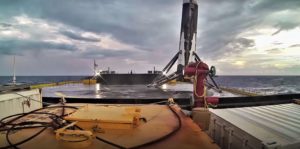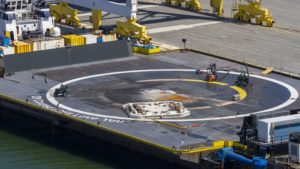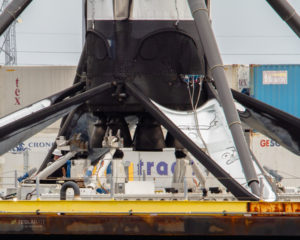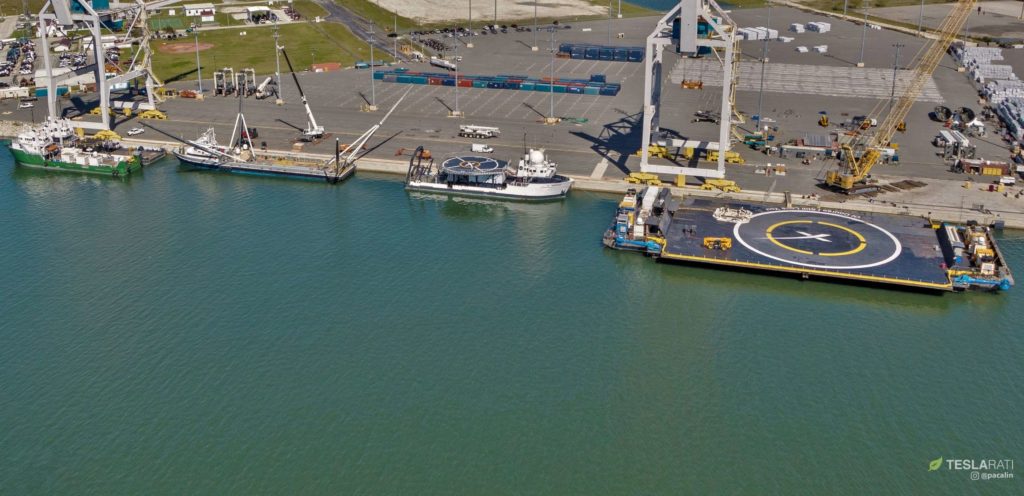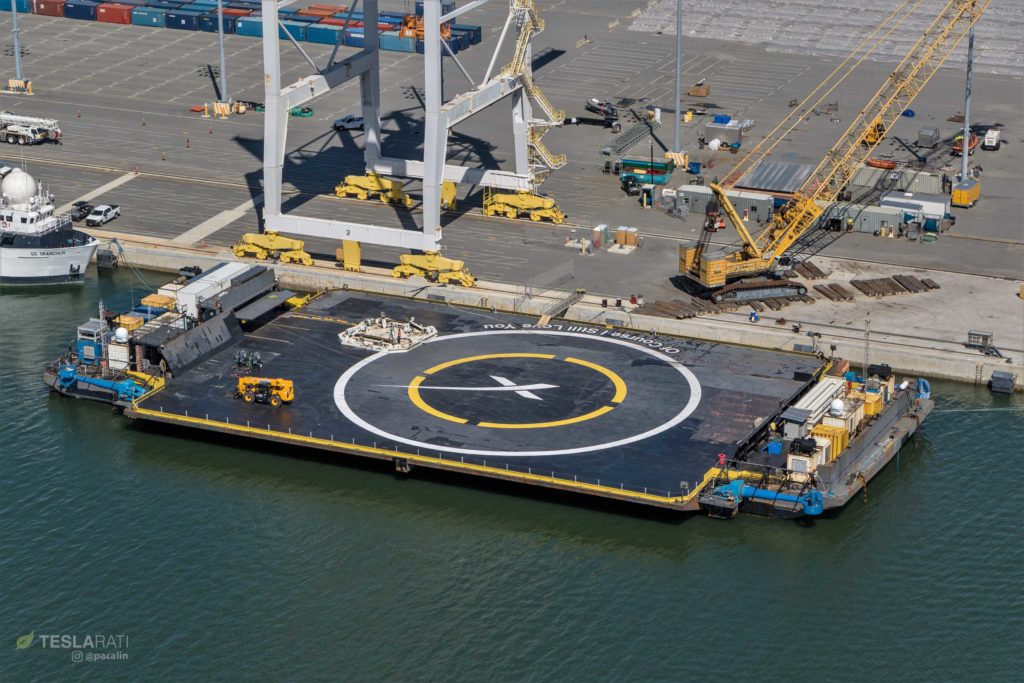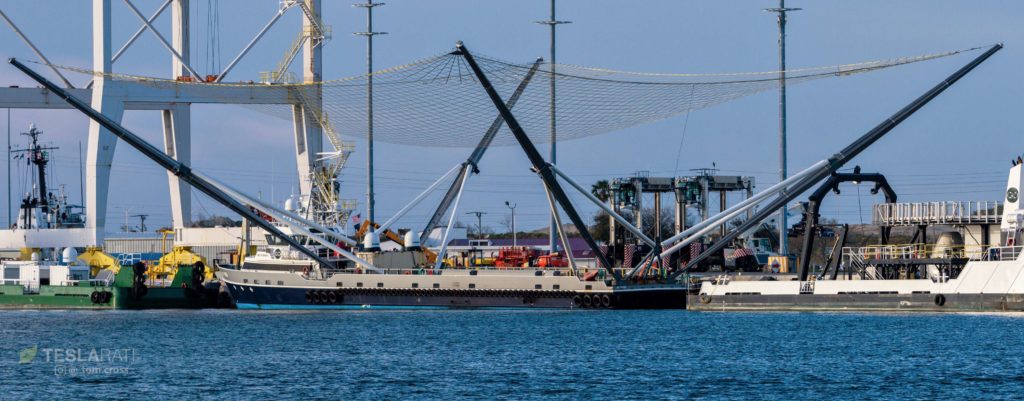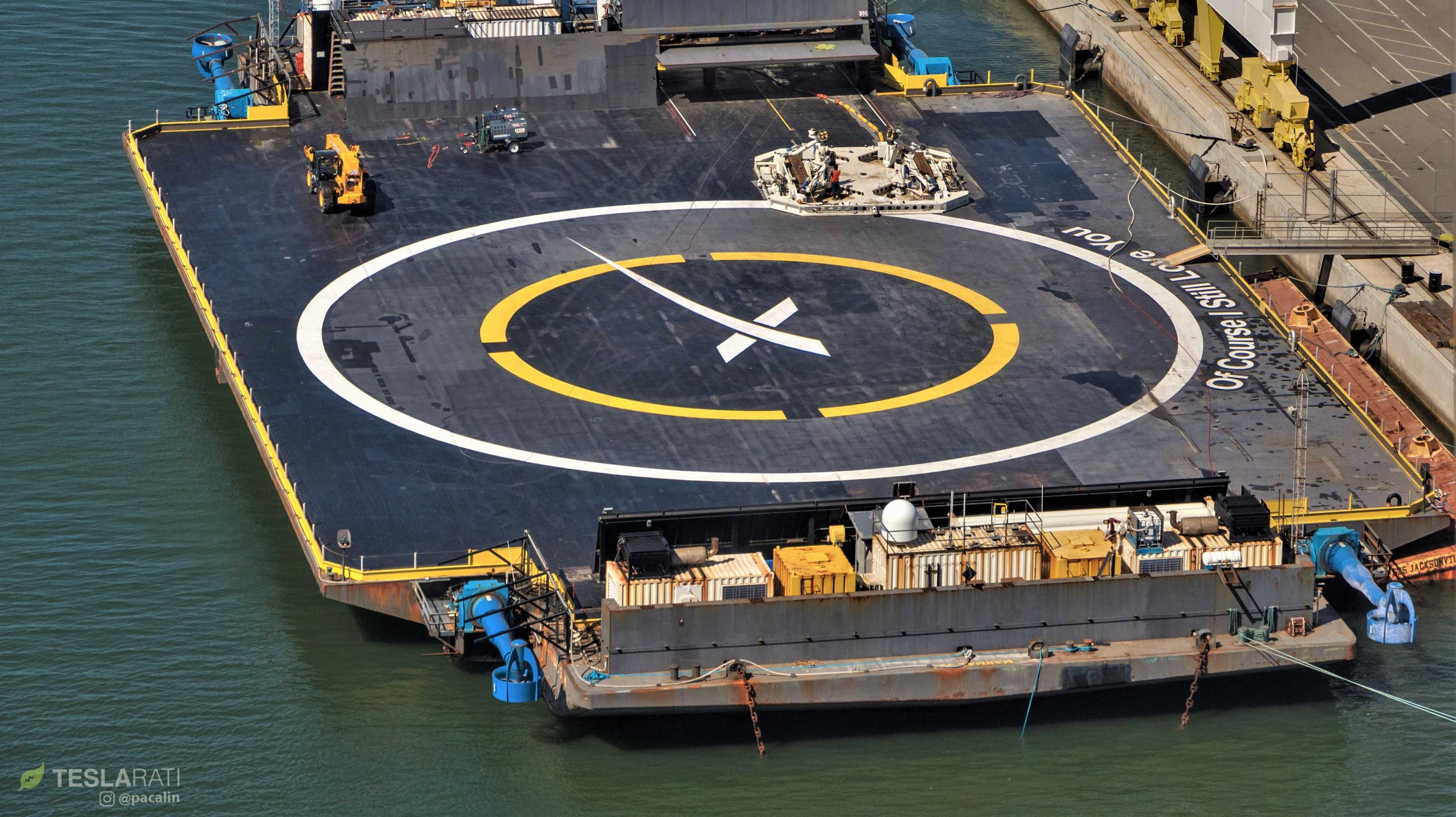

SpaceX
SpaceX’s Falcon 9 recovery robot prepares for imminent rocket landing [photos]
SpaceX’s shadow-bound Falcon 9 recovery robot was spotted out and about aboard drone ship Of Course I Still Love You (OCISLY) in the week leading up to the company’s next rocket launch, targeting liftoff at 8:45 pm EST (01:45 UTC), February 21st.
Dedicated to safely securing Falcon 9 and Heavy boosters after landing aboard drone ship OCISLY, the robot – unofficially nicknamed Octagrabber – uses four hydraulic arms and the sheer mass of its solid steel frame to grab onto the ~25-ton boosters’ built-in launch clamps and hold them steady in sea states that would create a hazard for recovery technicians. Effectively a rocket-grabbing robotic tank, Octagrabber will likely play a role in Falcon 9 B1048’s imminent third launch and landing.
Octagrabber with human for scale. 2/14 #spacex pic.twitter.com/JmUYDJubRm
— Pauline Acalin (@w00ki33) February 15, 2019
While Octagrabber’s work tends to take a backseat to the building-sized rocket landings it precedes, the robot has played an important role in SpaceX’s Falcon 9 recovery efforts since it went into service in mid-2017. Its development was expedited in part because of an iffy 2016 rocket recovery in which the Falcon 9 booster in question – destined to eventually become one of Falcon Heavy’s two side cores – landed hard and wound up precariously sliding around the deck of OCISLY, only saved from falling overboard by the lip of the drone ship’s deck.
- B1023 slid around OCISLY’s deck shortly after launch, nearly falling into the Atlantic. (SpaceX)
- SpaceX’s rocket-securing robot, known as Octagrabber, seen on OCISLY after another successful rocket recovery, August 12th. (Tom Cross)
- Octagrabber hangs on to B1046 as OCISLY arrives in port. (Tom Cross)
With a 25-ton, ~150-foot tall pressurized rocket sliding uncontrollably around their work area, SpaceX’s recovery technicians understandably extricated themselves from the situation and were forced to wait for calmer seas before securing the booster to the deck. Aside from a period of a few months in late 2017 where Octagrabber was effectively incinerated while attempting to secure a Falcon 9 booster with a fuel leak, the robot has been a part of nearly every East Coast Falcon 9 drone ship recovery since. The overall value it adds is unclear but the fact that a similar sibling has yet to be built for West Coast drone ship Just Read The Instructions (JRTI) suggests that Octagrabber is viewed as more of a good option to have with an otherwise non-critical level of utility.
Nevertheless, the lone robot continues to soldier on and is routinely spotted out and about on OCISLY’s deck while the drone ship is docked in Port Canaveral, presumably performing a variety of maintenance checkouts and testing hardware and software between rocket recoveries. While SpaceX’s 2019 launch manifest has had a slow start in January and February, things are expected to get quite a bit more active over the next few months, while a SpaceX executive recently indicated that the company was hoping to conduct 21 or more launches this year.
- (Pauline Acalin)
- (Pauline Acalin)
- Mr. Steven is seen here in Port Canaveral on February 15th, one week before the… accident… (Tom Cross)
Up next on SpaceX’s manifest is a launch just over 12 hours from now, featuring communications satellite PSN-6, an Air Force smallsat, and the first commercial Moon lander. If all goes as planned, the ~5400 kg (11,900 lb) trio will be placed into a high-energy geostationary transfer orbit with an apoapsis around 60,000 km (~38,000 mi) above Earth’s surface. Eight and a half minutes after launch, Falcon 9 B1048 will attempt its third landing in seven months, hopefully setting itself up for a fourth flight (and beyond) later this year. Mr. Steven – having completed a 5000 mile (8000 km) journey just a week and a half prior – will also attempt the first East Coast Falcon fairing catch.
Check out Teslarati’s newsletters for prompt updates, on-the-ground perspectives, and unique glimpses of SpaceX’s rocket launch and recovery processes!
News
SpaceX launches Ax-4 mission to the ISS with international crew
The SpaceX Falcon 9 launched Axiom’s Ax-4 mission to ISS. Ax-4 crew will conduct 60+ science experiments during a 14-day stay on the ISS.
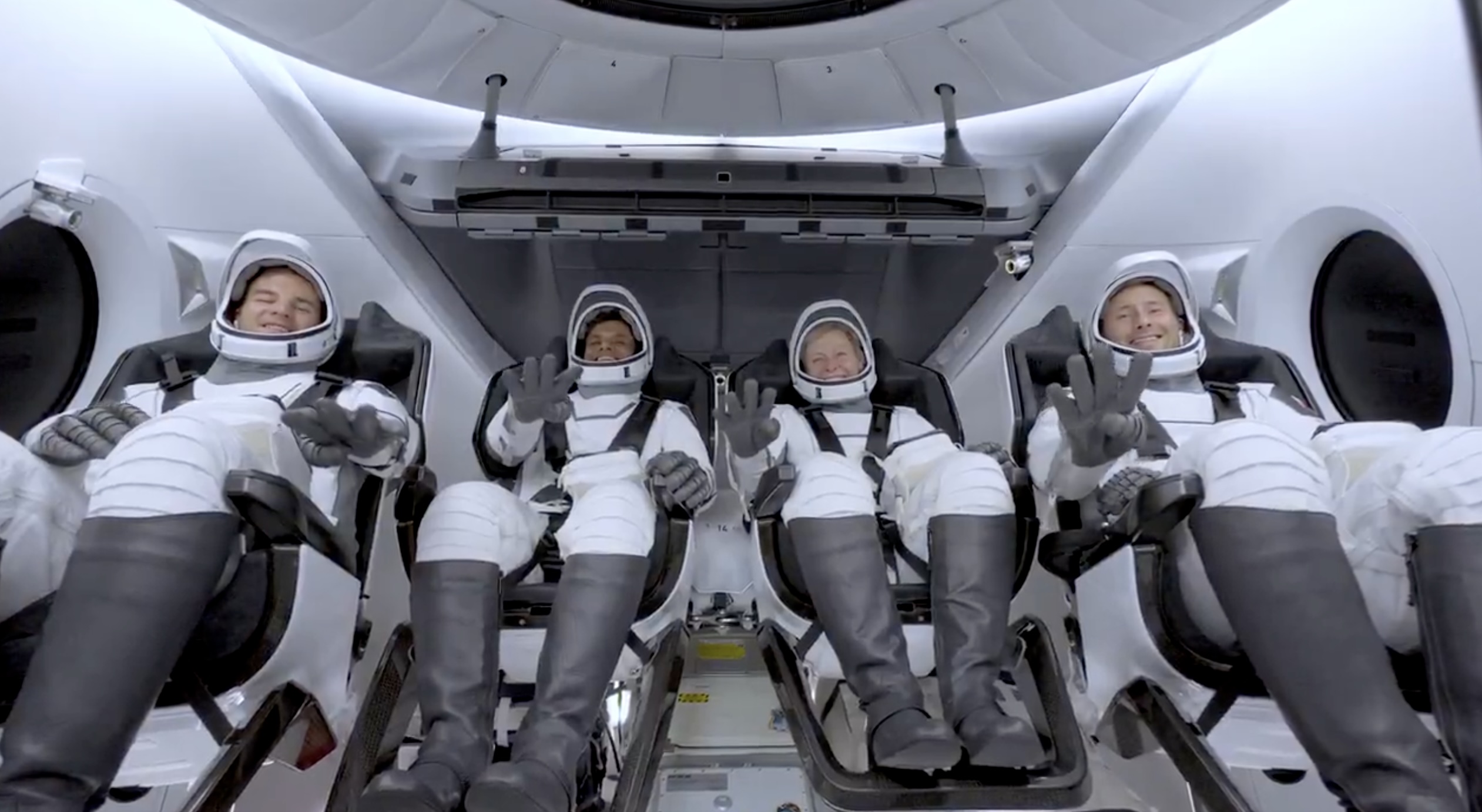
SpaceX launched the Falcon 9 rocket kickstarting Axiom Space’s Ax-4 mission to the International Space Station (ISS). Axiom’s Ax-4 mission is led by a historic international crew and lifted off from Kennedy Space Center’s Launch Complex 39A at 2:31 a.m. ET on June 25, 2025.
The Ax-4 crew is set to dock with the ISS around 7 a.m. ET on Thursday, June 26, 2025. Axiom Space, a Houston-based commercial space company, coordinated the mission with SpaceX for transportation and NASA for ISS access, with support from the European Space Agency and the astronauts’ governments.
The Ax-4 mission marks a milestone in global space collaboration. The Ax-4 crew, commanded by U.S. astronaut Peggy Whitson, includes Shubhanshu Shukla from India as the pilot, alongside mission specialists Sławosz Uznański-Wiśniewski from Poland and Tibor Kapu from Hungary.
“The trip marks the return to human spaceflight for those countries — their first government-sponsored flights in more than 40 years,” Axiom noted.
Shukla’s participation aligns with India’s Gaganyaan program planned for 2027. He is the first Indian astronaut to visit the ISS since Rakesh Sharma in 1984.
Axiom’s Ax-4 mission marks SpaceX’s 18th human spaceflight. The mission employs a Crew Dragon capsule atop a Falcon 9 rocket, designed with a launch escape system and “two-fault tolerant” for enhanced safety. The Axiom mission faced a few delays due to weather, a Falcon 9 leak, and an ISS Zvezda module leak investigation by NASA and Roscosmos before the recent successful launch.
As the crew prepares to execute its scientific objectives, SpaceX’s Ax-4 mission paves the way for a new era of inclusive space research, inspiring future generations and solidifying collaborative ties in the cosmos. During the Ax-4 crew’s 14-day stay in the ISS, the astronauts will conduct nearly 60 experiments.
“We’ll be conducting research that spans biology, material, and physical sciences as well as technology demonstrations,” said Whitson. “We’ll also be engaging with students around the world, sharing our experience and inspiring the next generation of explorers.”
SpaceX’s Ax-4 mission highlights Axiom’s role in advancing commercial spaceflight and fostering international partnerships. The mission strengthens global space exploration efforts by enabling historic spaceflight returns for India, Poland, and Hungary.
News
Starlink Cellular’s T-Mobile service to grow with third-party app data
From Oct 2025, T-Satellite will enable third-party apps in dead zones! WhatsApp, X, AccuWeather + more coming soon.
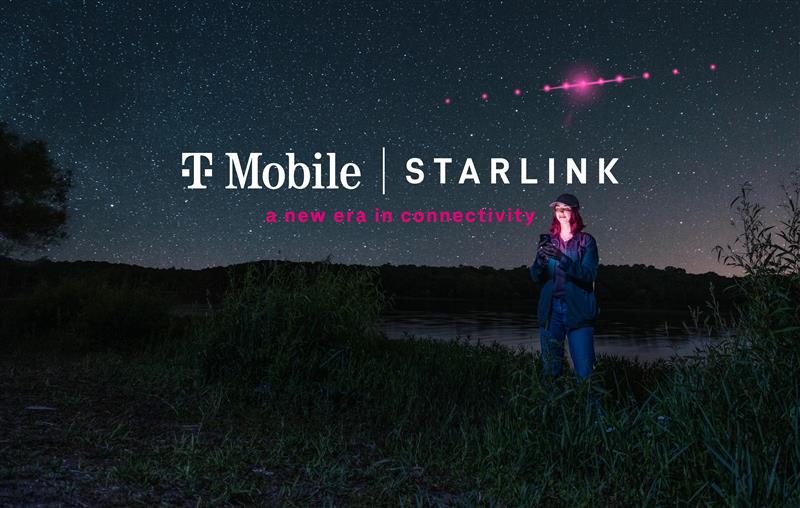
Starlink Cellular’s T-Mobile service will expand with third-party app data support starting in October, enhancing connectivity in cellular dead zones.
T-Mobile’s T-Satellite, supported by Starlink, launches officially on July 23. Following its launch, T-Mobile’s Starlink Cellular service will enable data access for third-party apps like WhatsApp, X, Google, Apple, AccuWeather, and AllTrails on October 1, 2025.
T-Mobile’s Starlink Cellular is currently in free beta. T-Satellite will add MMS support for Android phones on July 23, with iPhone support to follow. MMS support allows users to send images and audio clips alongside texts. By October, T-Mobile will extend emergency texting to all mobile users with compatible phones, beyond just T-Mobile customers, building on its existing 911 texting capability. The carrier also provides developer tools to help app makers integrate their software with T-Satellite’s data service, with plans to grow the supported app list.
T-Mobile announced these updates during an event celebrating an Ookla award naming it the best U.S. phone network, a remarkable turnaround from its last-place ranking a decade ago.
“We not only dream about going from worst to best, we actually do it. We’re a good two years ahead of Verizon and AT&T, and I believe that lead is going to grow,” said T-Mobile’s Chief Operating Officer Srini Gopalan.
T-Mobile unveiled two promotions for its Starlink Cellular services to attract new subscribers. A free DoorDash DashPass membership, valued at $10/month, will be included with popular plans like Experience Beyond and Experience More, offering reduced delivery and service fees. Meanwhile, the Easy Upgrade promotion targets Verizon customers by paying off their phone balances and providing flagship devices like the iPhone 16, Galaxy S25, or Pixel 9.
T-Mobile’s collaboration with SpaceX’s Starlink Cellular leverages orbiting satellites to deliver connectivity where traditional networks fail, particularly in remote areas. Supporting third-party apps underscores T-Mobile’s commitment to enhancing user experiences through innovative partnerships. As T-Satellite’s capabilities grow, including broader app integration and emergency access, T-Mobile is poised to strengthen its lead in the U.S. wireless market.
By combining Starlink’s satellite technology with strategic promotions, T-Mobile is redefining mobile connectivity. The upcoming third-party app data support and official T-Satellite launch mark a significant step toward seamless communication, positioning T-Mobile as a trailblazer in next-generation wireless services.
News
Starlink expansion into Vietnam targets the healthcare sector
Starlink aims to deliver reliable internet to Vietnam’s remote clinics, enabling telehealth and data sharing.

SpaceX’s Starlink expansion into Vietnam targets its healthcare sector. Through Starlink, SpaceX seeks to drive digital transformation in Vietnam.
On June 18, a SpaceX delegation met with Vietnam’s Ministry of Health (MoH) in Hanoi. SpaceX’s delegation was led by Andrew Matlock, Director of Enterprise Sales, and the discussions focused on enhancing connectivity for hospitals and clinics in Vietnam’s remote areas.
Deputy Minister of Health (MoH) Tran Van Thuan emphasized collaboration between SpaceX and Vietnam. Tran stated: “SpaceX should cooperate with the MoH to ensure all hospitals and clinics in remote areas are connected to the StarLink satellite system and share information, plans, and the issues discussed by members of the MoH. The ministry is also ready to provide information and send staff to work with the corporation.”
The MoH assigned its Department of Science, Technology, and Training to work with SpaceX. Starlink Vietnam will also receive support from Vietnam’s Department of International Cooperation. Starlink Vietnam’s agenda includes improving internet connectivity for remote healthcare facilities, developing digital infrastructure for health examinations and remote consultations, and enhancing operational systems.
Vietnam’s health sector is prioritizing IT and digital transformation, focusing on electronic health records, data centers, and remote medical services. However, challenges persist in deploying IT solutions in remote regions, prompting Vietnam to seek partnerships like SpaceX’s.
SpaceX’s Starlink has a proven track record in healthcare. In Rwanda, its services supported 40 health centers, earning praise for improving operations. Similarly, Starlink enabled remote consultations at the UAE’s Emirati field hospital in Gaza, streamlining communication for complex medical cases. These successes highlight Starlink’s potential to transform Vietnam’s healthcare landscape.
On May 20, SpaceX met with Vietnam’s Ministry of Industry and Trade, announcing a $1.5 billion investment to provide broadband internet, particularly in remote, border, and island areas. The first phase includes building 10-15 ground stations across the country. This infrastructure will support Starlink’s healthcare initiatives by ensuring reliable connectivity.
Starlink’s expansion in Vietnam aligns with the country’s push for digital transformation, as outlined by the MoH. By leveraging its satellite internet expertise, SpaceX aims to bridge connectivity gaps, enabling advanced healthcare services in underserved regions. This collaboration could redefine Vietnam’s healthcare infrastructure, positioning Starlink as a key player in the nation’s digital future.
-

 Elon Musk2 weeks ago
Elon Musk2 weeks agoTesla investors will be shocked by Jim Cramer’s latest assessment
-

 Elon Musk2 days ago
Elon Musk2 days agoxAI launches Grok 4 with new $300/month SuperGrok Heavy subscription
-

 Elon Musk4 days ago
Elon Musk4 days agoElon Musk confirms Grok 4 launch on July 9 with livestream event
-

 News1 week ago
News1 week agoTesla Model 3 ranks as the safest new car in Europe for 2025, per Euro NCAP tests
-

 Elon Musk2 weeks ago
Elon Musk2 weeks agoA Tesla just delivered itself to a customer autonomously, Elon Musk confirms
-

 Elon Musk1 week ago
Elon Musk1 week agoxAI’s Memphis data center receives air permit despite community criticism
-

 News2 weeks ago
News2 weeks agoXiaomi CEO congratulates Tesla on first FSD delivery: “We have to continue learning!”
-

 Elon Musk1 week ago
Elon Musk1 week agoTesla scrambles after Musk sidekick exit, CEO takes over sales

